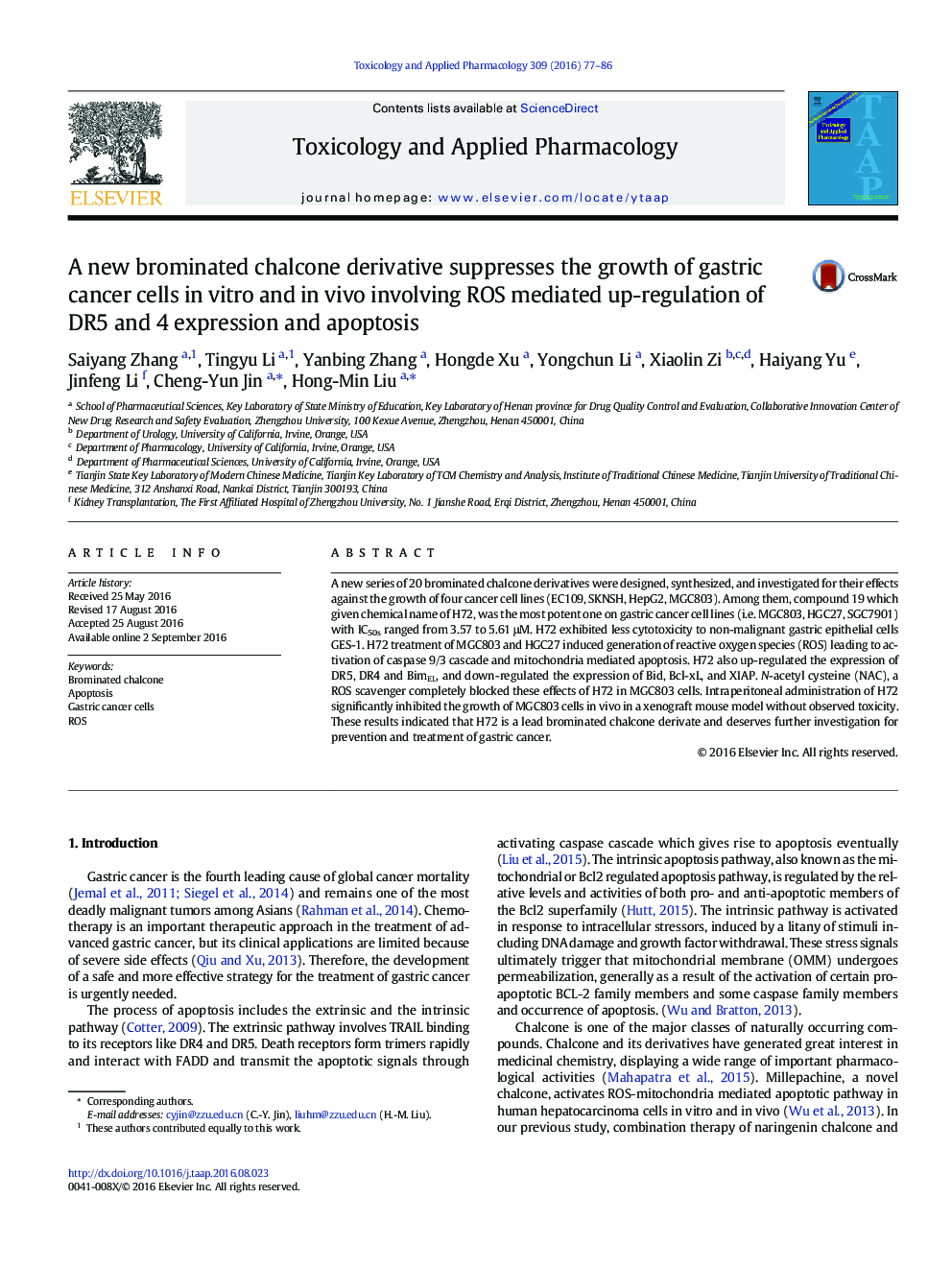| Article ID | Journal | Published Year | Pages | File Type |
|---|---|---|---|---|
| 2568011 | Toxicology and Applied Pharmacology | 2016 | 10 Pages |
•20 brominated chalcone derivatives were designed and synthesized.•H72 caused potent cytotoxic activity against MGC803 and less against GES1.•H72 led to activation of caspase 9/3 cascade and mitochondria mediated apoptosis.•H72 induced generation of reactive oxygen species (ROS).•H72 significantly inhibited the growth of MGC803 cells in vivo.
A new series of 20 brominated chalcone derivatives were designed, synthesized, and investigated for their effects against the growth of four cancer cell lines (EC109, SKNSH, HepG2, MGC803). Among them, compound 19 which given chemical name of H72, was the most potent one on gastric cancer cell lines (i.e. MGC803, HGC27, SGC7901) with IC50s ranged from 3.57 to 5.61 μM. H72 exhibited less cytotoxicity to non-malignant gastric epithelial cells GES-1. H72 treatment of MGC803 and HGC27 induced generation of reactive oxygen species (ROS) leading to activation of caspase 9/3 cascade and mitochondria mediated apoptosis. H72 also up-regulated the expression of DR5, DR4 and BimEL, and down-regulated the expression of Bid, Bcl-xL, and XIAP. N-acetyl cysteine (NAC), a ROS scavenger completely blocked these effects of H72 in MGC803 cells. Intraperitoneal administration of H72 significantly inhibited the growth of MGC803 cells in vivo in a xenograft mouse model without observed toxicity. These results indicated that H72 is a lead brominated chalcone derivate and deserves further investigation for prevention and treatment of gastric cancer.
Graphical abstractFigure optionsDownload full-size imageDownload high-quality image (68 K)Download as PowerPoint slide
